Tokyo Mirage Sessions ♯FE is a strange blending of the contemporary setting and character designs from Shin Megami Tensei and the class and weapon systems from Fire Emblem. Those are two solid sources to draw from but they never coalesce, the result feeling more like a Persona spinoff with superficial Fire Emblem trappings than a true hybrid. The characters are shallow. The plot is meandering. It says nothing about the culture it portrays. Skill development is tedious. The difficulty ricochets between trivial and arbitrary. But it also has one of my favorite combat mechanics in any RPG. Tokyo Mirage Sessions presents a conundrum: Can a single enjoyable mechanic redeem an otherwise bad videogame?
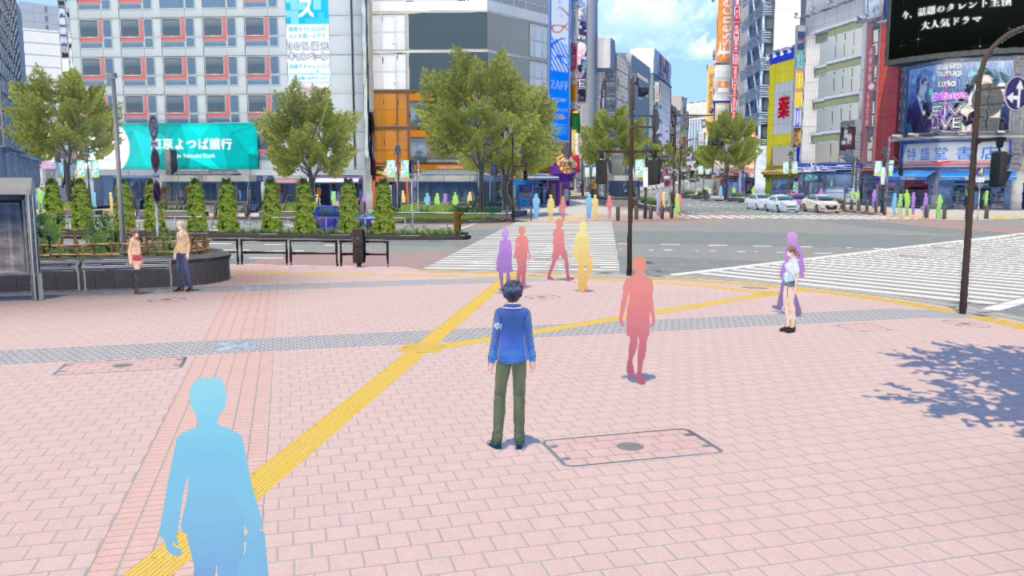
Tokyo Mirage Sessions is set in a fantastic version of the Japanese cultural center Shibuya. In this world, individuals’ talent and passion emerge as energy called Performa. Performa unlocks unlimited artistic potential but is also coveted by wraiths called Mirages. Dwelling in Idolaspheres, twisted mirror-images of Shibuya’s various performance venues, the Mirages emerge to prey on this energy for their own nefarious purposes and recent attacks have grown to an apocalyptic crescendo. Shibuya’s defense is headed by the Mirage Masters of the Fortuna Entertainment talent agency. Mirage Masters are rare individuals able to bond with a Mirage and use its powers within the Idolaspheres. When not performing as pop music idols, dancers, and actors, the Fortuna Entertainment talent fight as secret superheroes to save Shibuya from destruction.
If you’re wondering how medieval fantasy strategy videogame Fire Emblem ties into all of this, that’s one of Tokyo Mirage Sessions’ problems: It doesn’t. Itsuki Aoi and Tsubasa Oribe, the Mirage Masters I first add to my party, bond with Mirages taking the form of Fire Emblem characters Chrom (Awakening) and Caeda (Shadow Dragon and the Blade of Light). New Masters that join the party later also bond with Mirages based on Fire Emblem characters and Tiki hangs around the Fortuna Entertainment office to help with upgrades.
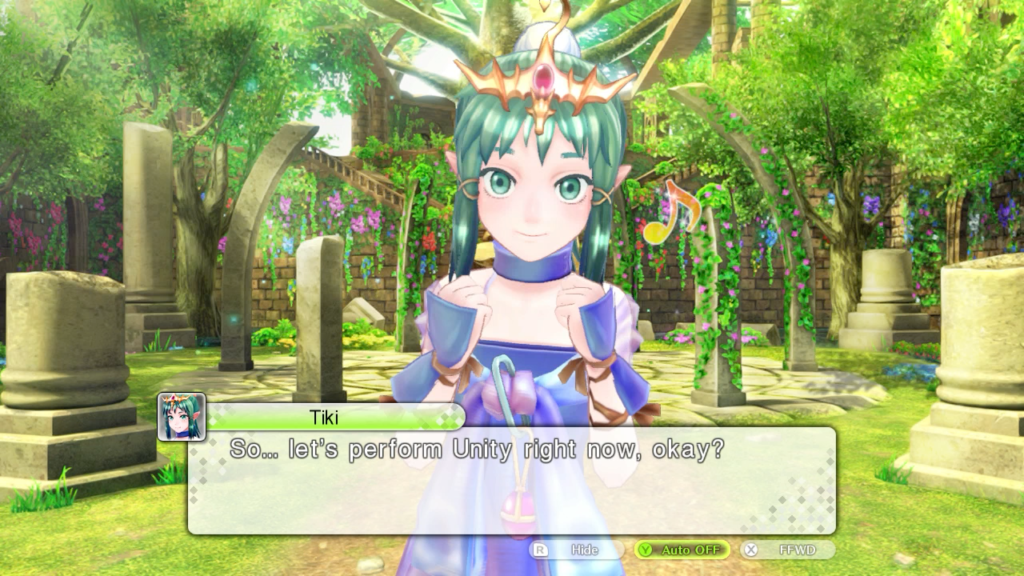
But here’s the thing: The Fire Emblem cast have amnesia. They have no recollection of their own world until the final chapter, and the villainous plot revealed there is not reliant on the crossover elements. It could be any other world-threatening calamity and be exactly the same. Fire Emblem character names are copy-and-pasted onto generic archetypes while Shin Megami Tensei elements run rampant, making Tokyo Mirage Sessions less a crossover than a watered down Persona spinoff. The one meaningful crossover element is the Weapon Triangle, which is put to devastating use in combat but hardly makes for a distinct Fire Emblem experience.
The shallow crossover might be disappointing to Fire Emblem fans, but surely the strong characterization and mise en scène borrowed from the Shin Megami Tensei series must make Tokyo Mirage Sessions’ storytelling good, right? It might, if it wasn’t reluctant to have more than a broad sense of conflict.
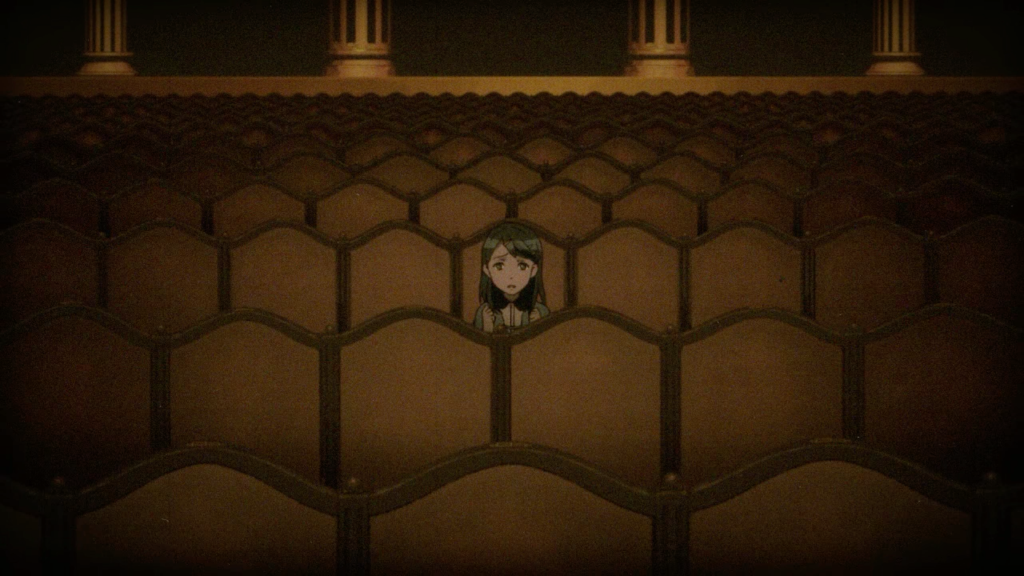
In Tokyo Mirage Sessions’ opening cutscene, I see a young Tsubasa at a concert featuring her sister Ayaha, a promising new singer. The performances are stirring and the concert seems a great success, so much so that the Mirages attack and everyone present, except Tsubasa, vanishes. Tsubasa, scarred by the attack and the loss of her sister, teams up with an eclectic band to unravel the mystery of her survival and stop the threat! Actually no, the attack is barely mentioned again and her inexplicable survival is treated as unremarkable. Later, on their first real mission as Mirage Masters, Tsubasa and Itsuki enter an Idolasphere and encounter Ayaha under Mirage control. Ayaha becomes Tsubasa’s recurring nemesis, a constant reminder of her weakness and inexperience which she must overcome to save her sister once and for all! Actually no, Ayaha is saved a short while later and spends the rest of the plot hanging around Fortuna Entertainment dispensing filler sidequests, never examining the years she spent as a Mirage captive.
But there must be plenty of drama to mine from a cast of high school students juggling their education, pop entertainment careers, and superhero exploits! Actually no, past the first cutscene their school is never seen again and they give every impression they’ve finished their primary education. But they work in a demanding field requiring thousands of exhausting practice hours in an industry that runs young talent through a meat grinder! Actually no, everybody is an immediate success and their career obligations always match up perfectly with their secret identities as Shibuya-saving Mirage Masters.
Tokyo Mirage Sessions is so focused on its unimpressive final chapter twist that all its drama leans on that reveal. It forgets to exist in the moment and allow drama to unfold from the character’s situations and circumstances. It’s not eventless, but each moment is devoid of catharsis as it lumbers forward to the big reveal of the final boss.
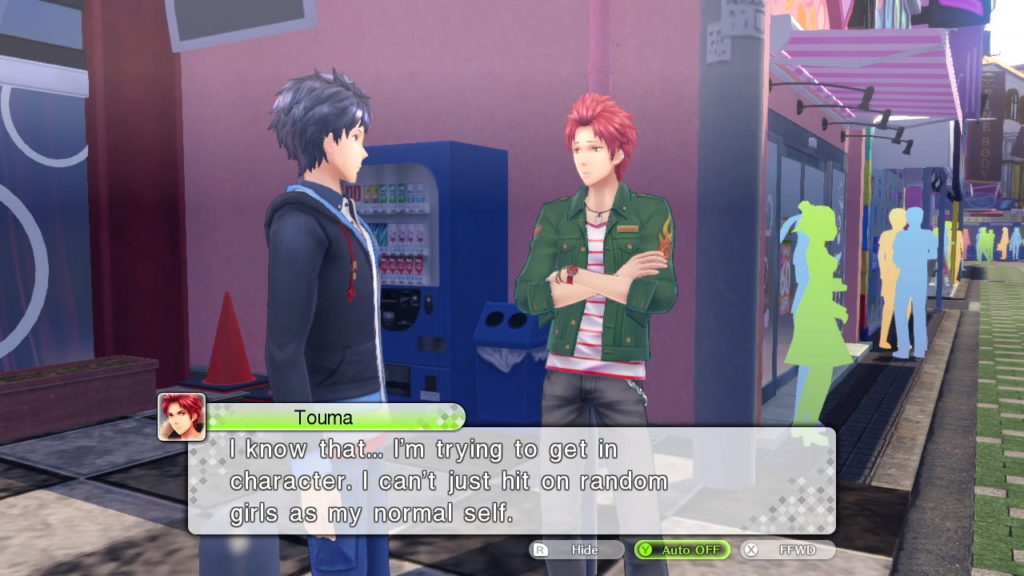
A related issue to the lack of conflict is how that impacts the industry and culture Tokyo Mirage Sessions portrays. I don’t expect it to be a scathing takedown or an exuberant pep rally for J-pop, but it instead opts to be neither. Musical numbers signpost the plot, but it never stops to explain why these performances are important. A too-late, two-sentence history lesson about the performing arts in Japan establishes that songs and plays were once performed to ward off demons. This should have been a theming backbone, but instead is perfunctory, delivered at the eleventh hour long after I’ve stopped asking why pop stars are also superheroes. Tokyo Mirage Sessions uses music without substance or context, assuming that it’s important—which of course it is—but never bothering to make a real case for it. Much like the Fire Emblem crossover, the J-pop is a shallow trapping on generic RPG themes and archetypes.
Some ways Tokyo Mirage Sessions portrays the J-pop industry do give me pause. Tsubasa, a seventeen-year-old high school student, is asked to dress in a revealing outfit and greet fans at a press event. Every single person in line is an older man. Barry Goodman, Fortuna Entertainment’s trainer, is obsessed with Mamori Minamoto, the youngest cast member. He fixates on her “purity” and declares that he will protect her from all the threats of the world. It’s probably meant to be ironic that Mamori bonds with a Knight Mirage and thus spends each battle protecting her castmates, but it only highlights Barry’s inappropriate behavior even more. Mamori doesn’t need his protection. [Ed: According to my friend Craig Windle, “mamori” literally means “protect.”] That Tokyo Mirage Sessions thinks it can sell a throng of older men lusting after a teenage girl as comedic or Barry’s preoccupation with a preteen girl as affectionate is frustrating, but may have been easier to endure if it had anything else to say.
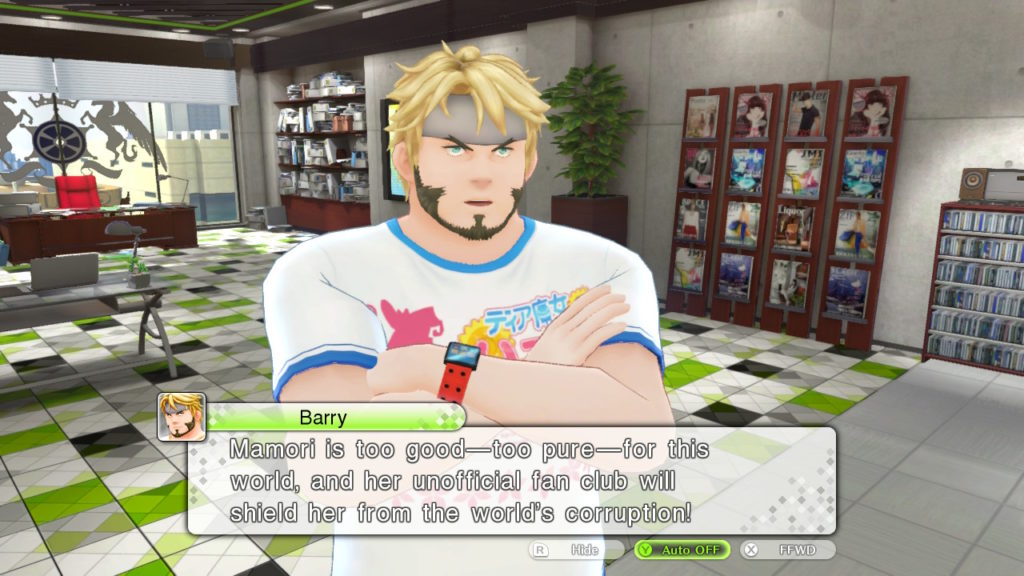
As a last note, my comments are a perspective based from the United States and directed at this specific videogame. It is not meant to suggest that US popular culture does not have its own (and often similar) issues about how it treats women of all ages. It is not meant to condemn Japanese popular culture as a whole or the J-pop subculture in particular. I am expressing my feelings about Tokyo Mirage Sessions and how I reacted to it as a product localized for and sold to a non-Japanese audience and nothing more.
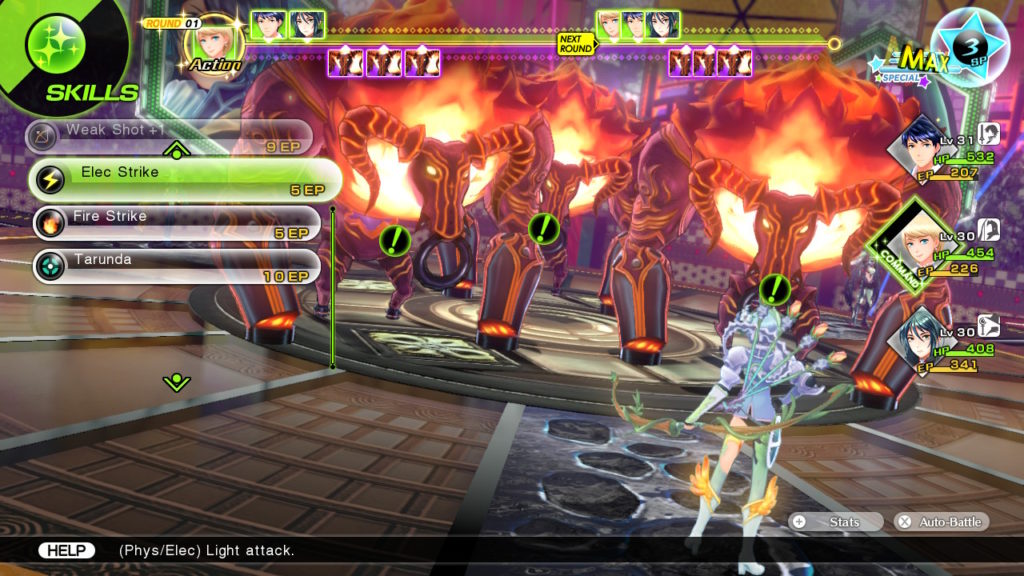
In spite of all this, I still enjoy Tokyo Mirage Sessions because its combat system is fantastic. As I explore Shibuya’s Idolaspheres with the player character Itsuki, hostile Mirages appear as wandering black-cloaked spectres which I may touch to begin a battle (or avoid if I don’t want to fight). Battles move to the familiar abstract RPG combat environment, but here imagined as a performance before a sold-out stadium audience. On a floating stage, my Mirage Masters transform into Fire Emblem-influenced warriors to fight the Mirages that threaten Shibuya in traditional turn-based RPG battles.
As my Mirage Masters win battles and gain experience they produce special Performa that unlocks new skills. Unlocking these skills requires heading back to the Fortuna Entertainment office to talk to Tiki, and the deeper in I got the more these trips felt tedious and unnecessary. Why do my cast members produce an item instead of learning a new skill as they level up? What does a double-unlock system add beside inflated playtime through extra footwork? Often I would return to an Idolasphere for only two or three battles before a cast member created more Performa and I was leaving to talk to Tiki again. I still put up with these frequent trips as the new abilities are incredibly useful.
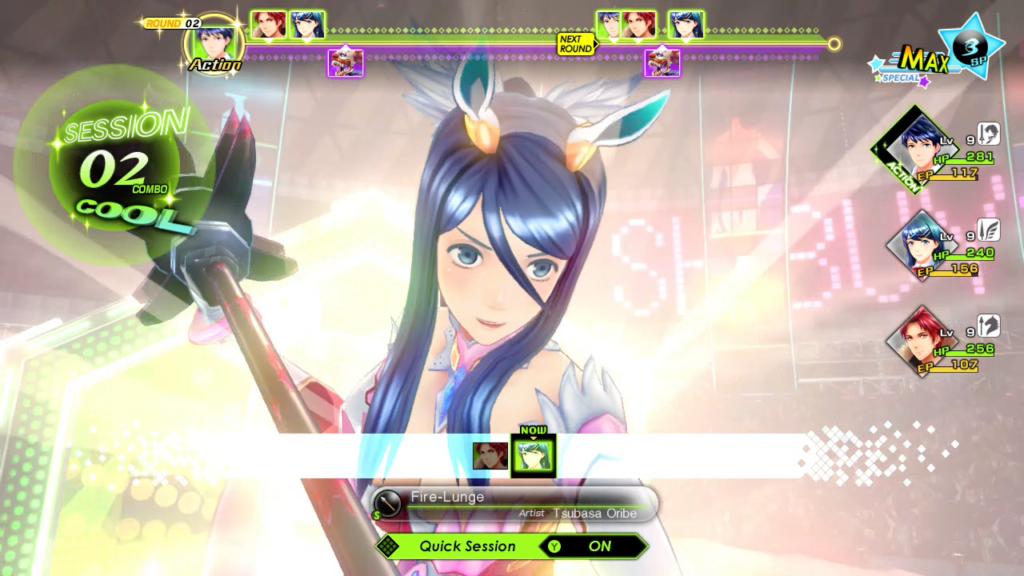
One ability is called a Session Attack, and they form the backbone of Tokyo Mirage Sessions’ RPG combat systems. Enemy weaknesses are borrowed from Fire Emblem’s Weapon Triangle, an interpretation of rock-paper-scissors where Sword-users beat Axe-users, Axe-users beat Lance-users, and Lance-users beat Sword-users. When I take advantage of these weaknesses in battle, a Session Attack is triggered where other party members may follow up my initial attack with their own subsequent attacks. Session Attacks begin with the three active cast members participating against a single enemy, but over time they spill over to additional enemies, then even later participate even when not active in battle. In the Prologue, a Session Attack might trigger an extra attack or two, but by the final chapter they can be between twenty and thirty triggers long under the best conditions.
Session Attacks aren’t perfect from a design perspective. They become quite long, and even toggling the Quick Session option still leaves me staring at ten seconds of Session Attacks after every move I make; leaving it off means making one combat decision every one or two minutes by the endgame. Once my cast members can join in Session Attacks without being active in battle, several permanently join the back bench as their advantages in combat are made redundant by new cast members and their weaknesses make them liabilities. I need to watch those weaknesses, as Mirages are capable of triggering their own Session Attacks, which are lethal to their targets. This affects the difficulty as every match hinges on which party can trigger a devastating Session Attack first. When fighting enemies with unknown weaknesses or who have a speed advantage, my cast members are dismantled with such ferocity that the difficulty feels arbitrary.
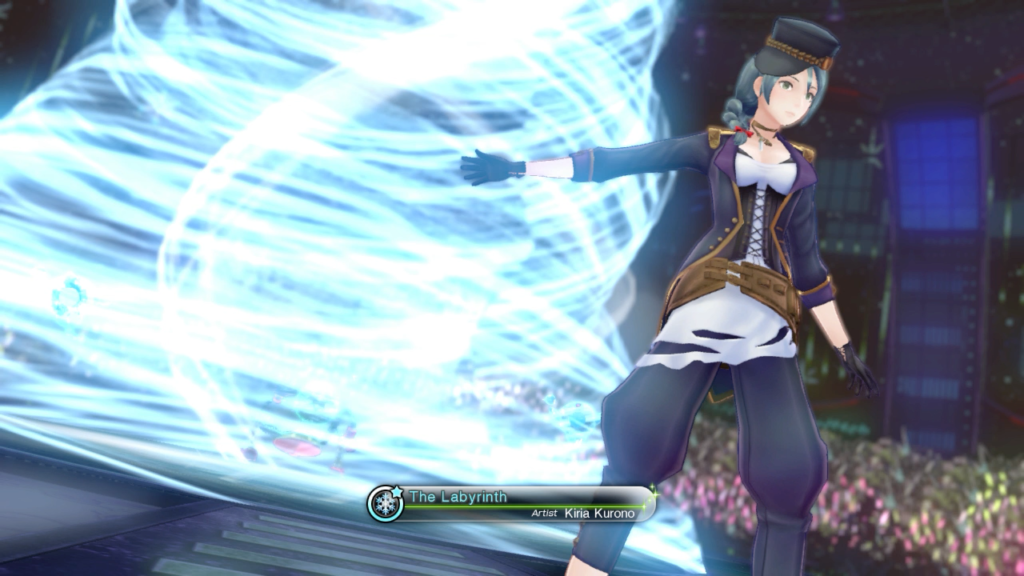
Nevertheless, I love the Session Attacks. Decimating an enemy party with a single well-placed attack feels good in any videogame, and Tokyo Mirage Sessions enhances that sense of satisfaction with the sheer spectacle and randomness of the attacks themselves. By completing sidequests that develop my cast member’s careers, they learn new combat abilities called “ad-lib performances” which randomly appear in place of regular or Session attacks. After helping Tsubasa find the confidence to appear in a soda commercial, her attacks will sometimes be replaced by that very soda commercial, which floods the battlefield and hits all enemies. By helping Touma get a part as a one-off Sentai villain, his attacks will sometimes be replaced by him rushing the enemies dressed as that villain. I had a lot of low feelings about other aspects of Tokyo Mirage Sessions, but the Session Attacks and the systems built around them are so satisfying and fun that I came out the other end of this sixty hour RPG enjoying myself anyway.
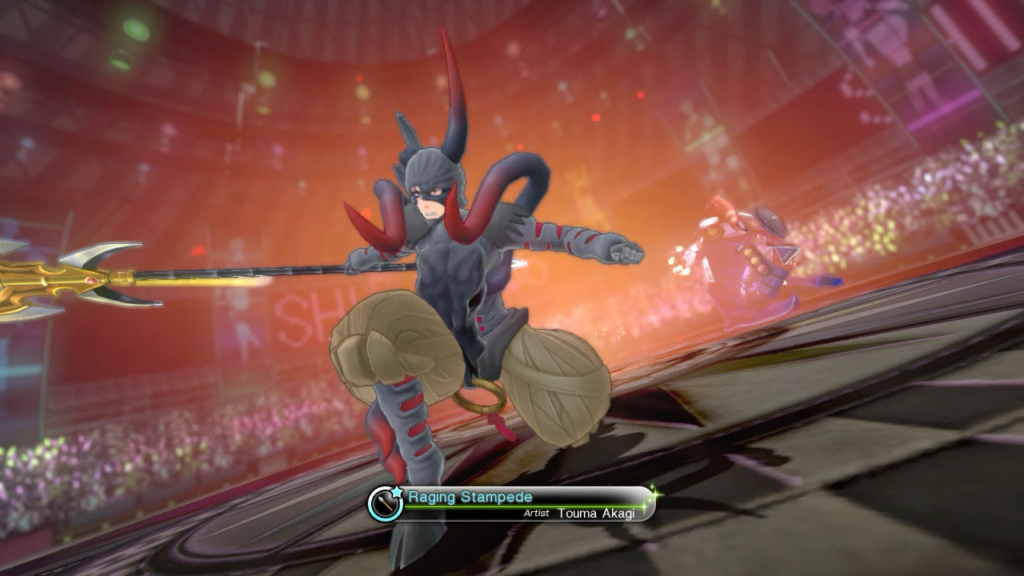
Tokyo Mirage Sessions is a flawed videogame. It doesn’t know what to do with its many composed elements, putting the Fire Emblem crossover to waste and having nothing to say about the music culture it adopts as a setting. The way it treats its women cast members ranges from concerning to put-that-man-on-a-watchlist disturbing. Its RPG development elements can be tedious, but the combat built from that development is a lot of fun. Sometimes all that matters about a videogame is it’s fun. And, in the end, I did enjoy Tokyo Mirage Sessions thanks to the fun spectacle of its Session Attack system.